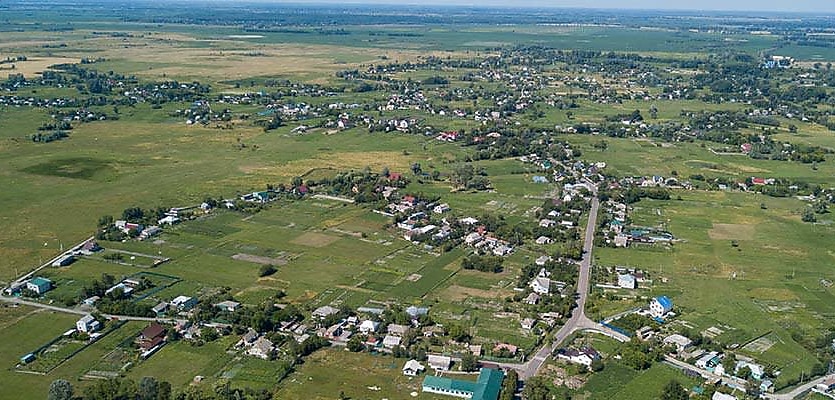A new report showed that regional lifestyle areas — particularly NSW and Queensland’s trophy markets — are now losing their shine as demand continues to fizzle out.
The latest quarterly Regional Market Update from CoreLogic showed dwelling values across the combined regions rose 17 per cent over the 12-month period to July.
The figures stand in stark contrast with the 5.4 per cent growth seen across Australia’s capital cities.
But despite the widespread capital gains in regional values on an annual basis, regional markets are not spared from the recent downturn spreading across the country.
Regional dwelling values fell by 0.2 per cent over the latest quarter to July, with 10 non-capital areas recording declines in house values during the period. The figures are also significantly lower than the 6.4 per cent peak recorded in the quarter to December 2021.
CoreLogic economist Kaytlin Ezzy said several regional areas that previously saw some of the strongest growth over the COVID period are now exhibiting weaker selling conditions, as consecutive rate increases, affordability constraints, weakening consumer sentiments, and high non-discretionary inflation hit demand.
“Typically, markets with a higher median value tend to lead the broader market when shifting through different cycles. After recording some of the strongest value growth throughout the COVID period, each of these areas now have a median house value in excess of $1 million,” Ms Ezzy stated.
NSW’s trophy regions bore the brunt of the recent quarterly declines, with the largest falls in house values recorded in Richmond-Tweed (4.5 per cent), Illawarra (down 3.5 per cent) and Southern Highlands and Shoalhaven (down 3 per cent).
Heat from popular South-East Queensland regional lifestyle markets also dissipated, as house values in the Sunshine and Gold Coast fell over the last three months by 2.5 per cent and 1.2 per cent, respectively.
Despite NSW being at the forefront of the downturn among regional markets, the state is still home to the biggest annual movers. The state’s Riverina region emerged as the top performer among regional markets, recording a 12-month growth of 27.8 per cent.
Queensland also had its share of top performers, with Wide Bay taking second place with a 26.8 per cent annual gain.
Another strong NSW region performer was New England and the north-west, where house prices rose by 26.4 per cent on an annual basis.
On the other end of the spectrum, the lowest yearly growth rate was recorded across Ballarat in Victoria (7.4 per cent), followed by Bunbury in Western Australia (9.5 per cent).
As interest rates move higher and affordability pressures mount, Ms Ezzy said it’s likely the decline in values witnessed in capital cities will become more widespread and impact regional areas.
“Value declines are already being seen across more expensive regional markets, while the pace of growth has eased considerably across the combined regions’ broad middle and lower quartile markets,” she said.
But the expert offered that regional areas may be more insulated from declines compared to their capital city counterparts, partly due to these markets’ relative affordability and low advertised supply levels.
“Additionally, the strong growth that’s occurred over the past two years should help cushion regional homeowners from the most extreme effects of the cycle’s downturn,” she added.
And while sale transactions in 15 of the 25 regions fell on an annual basis, Ms Ezzy reminded that the figures come off a strong year of selling.
“While sales activity across some of these regional markets is down compared to the previous year, it’s important to remember this is off the back of some extremely high sales volumes recorded the year prior. All but one of the markets analysed recorded a rise in dwelling sales compared to the region’s previous five-year average,” Ms Ezzy said.
As a further sign that regional markets have not completely lost their appeal, data showed most regions are also still recording faster selling times compared to the same period last year.
Data showed that houses in the Queensland city of Toowoomba showed the fastest sales times, spending just 12 days on market, on average, across the last 12 months. During the same period last year, houses in the region spent an average of 23 days before being snatched up.
Properties were also selling fast in Queensland’s Gold Coast and Tasmania’s Launceston and north-east regions, each recording a median time on market of 17 days.
Despite most markets still seeing faster selling times on an annual basis, the property analyst acknowledged that demand for regional areas is softening.
She cited that the median days on market and vendor discounting figures have been rising in the past two quarters, indicating that buyers are beginning to reign back some control.
“Vendors are now offering slightly larger discounts in order to secure a sale, while regional properties are now taking slightly longer to sell as selling conditions start to shift back in favour of buyers,” she said.
Ms Ezzy stated that with the volume of newly listed properties beginning to normalise, sellers need to be more strategic in order to close a deal.
“As more properties come onto the market, vendors will potentially have to make more concessions when trying to secure a sale,” she concluded.







You are not authorised to post comments.
Comments will undergo moderation before they get published.